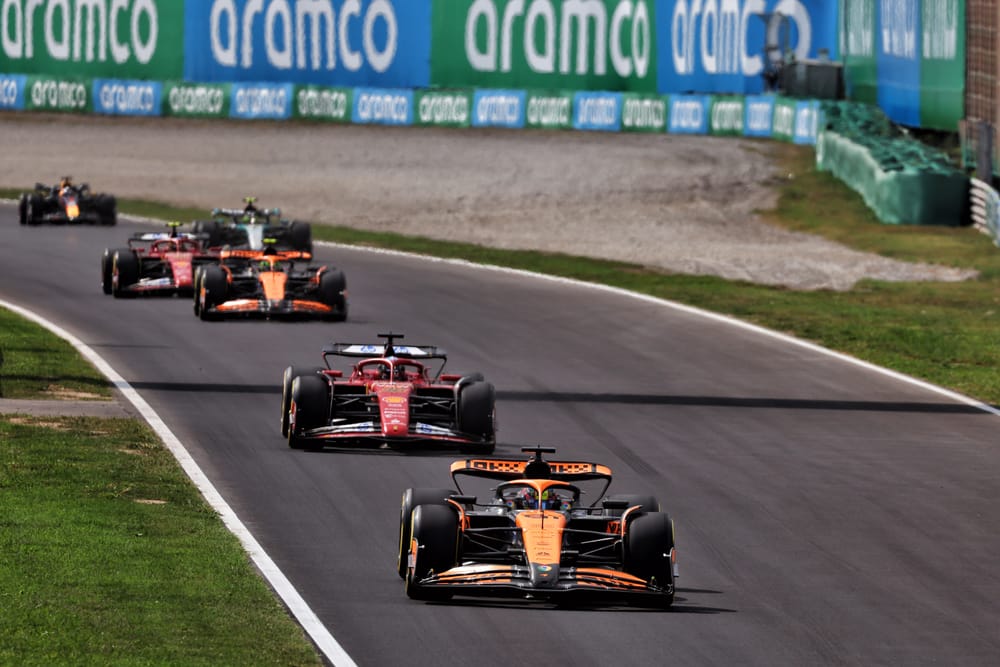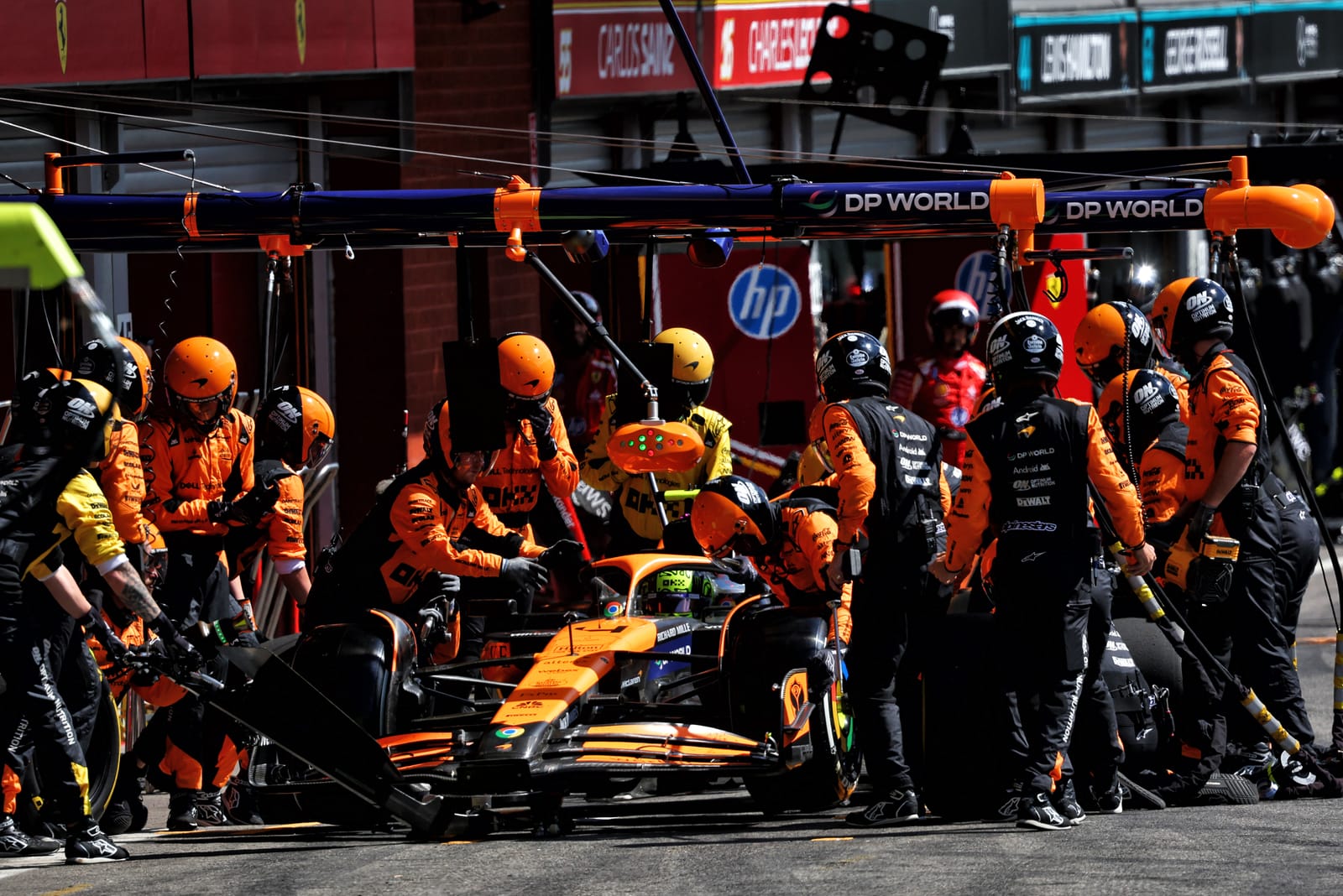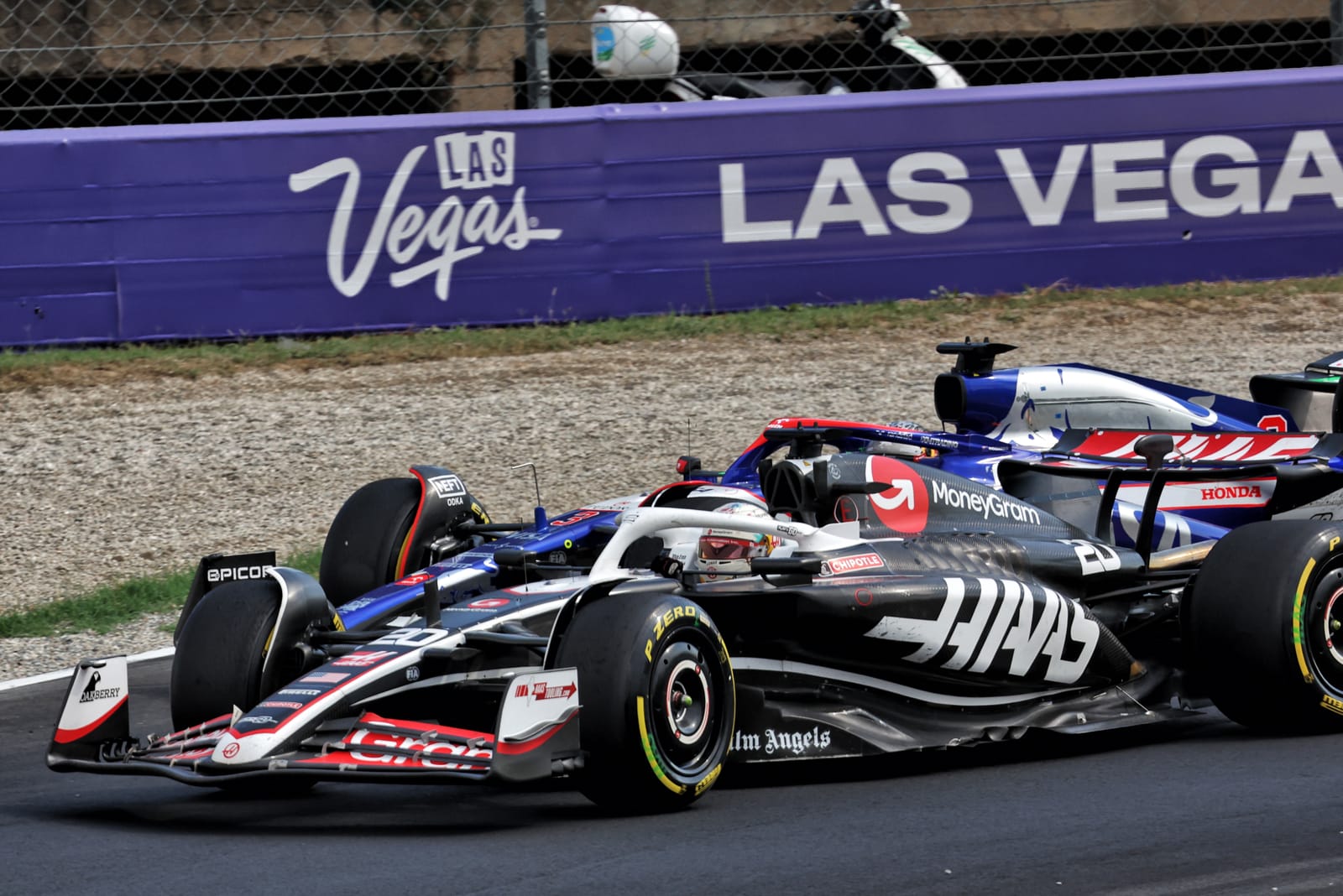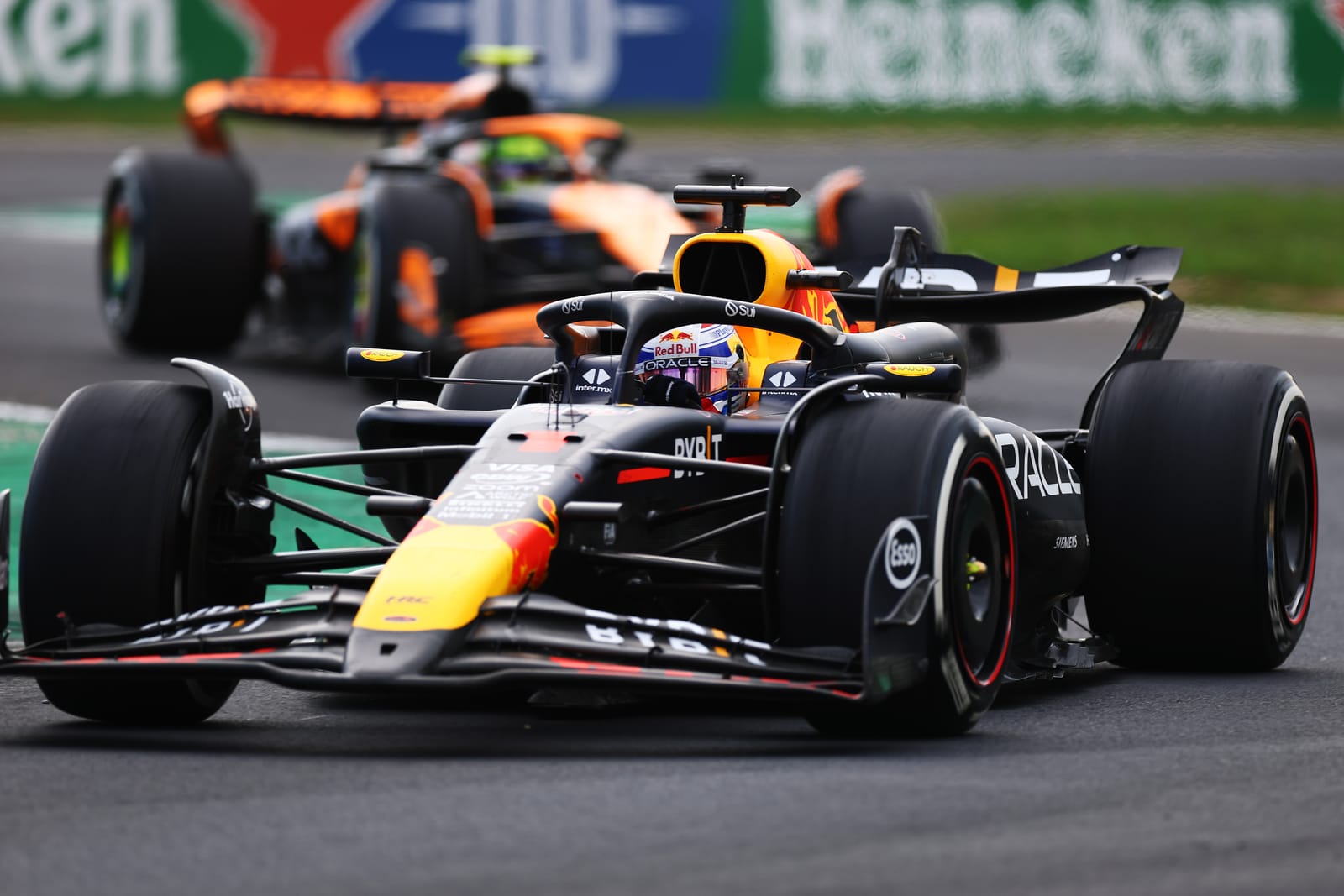Up Next

Charles Leclerc’s knack of delivering at Formula 1’s big venues continued; a Ferrari victory at Monza for the second time in his career in the same season that he won around his own streets of Monaco.
It was a beautifully-judged one-stop drive, caressing the delicate tyres well enough to take the Italian Grand Prix from the two-stopping McLarens on strategy, but fast enough to force a pace upon them in the first stint.
Whether the Ferrari was actually as fast a car as the McLarens is open to debate. Lando Norris believes it was faster, that because it works its front tyres less aggressively than the McLaren, it could run a harder pace for a given level of front tyre degradation and hence was able to do the Monza-favoured one-stop.
Norris’ team principal Andrea Stella believes it too; that despite McLaren having sewed up the front row, the Ferrari was faster on race day through its tyre treatment.
“The fact that Charles could keep pace with us, when Oscar [Piastri] in the lead had clear air and Charles did not, tells you that he was probably actually quicker,” Stella argued.
Observers from other teams believe McLaren got spooked into going for a two-stop when it was perfectly winnable as a one-stop, given that it was running 1-2 after the first round of stops; that it was all about tyre management and nerve, that even if the Ferrari did look after its front tyres better, the advantage of McLaren’s initial track position should have allowed it to one-stop and still stay ahead.
The Ferrari, in low downforce trim around a circuit which places such emphasis on braking and short slow corners, was balanced and competitive. Its floor update probably helped too but Monza isn’t the sort of track which would expose any bouncing problem anyway – the main target of the new floor.
Leclerc - taking advantage on the opening lap of the McLarens’ territorial contest into the Roggia chicane to nip by Norris into second – ran up front keeping the pressure on the race-leading Piastri.
With Carlos Sainz in the other car running a couple of tenths of a second per lap slower in fourth, it looked like the Ferraris may have been on split strategies, with Sainz going unambiguously for the one-stop, Leclerc maybe needing to go with a two.
Actually the further the race went on, the clearer it became that even at Leclerc’s pace, the tyres were holding on fine.
But Ferrari nonetheless responded to Norris’ undercut attempt on lap 14 of 53, Leclerc coming in on the next lap but still losing position to the McLaren, much to his irritation.
“What was that?” he asked. “We came in early but still got undercut.”
But actually, it worked brilliantly well for him in hindsight. Having no pressure from behind – by the start of stint two Sainz was 9s behind, holding off Lewis Hamilton’s Mercedes - allowed him to give his new hard tyres a very gentle introduction.
With lots of management – not pushing too hard through the Lesmos and Parabolica – Leclerc was able to keep the tyres in great shape. They grained, just as the mediums had in the first stint, but the graining would clean off as the tyres wore down.
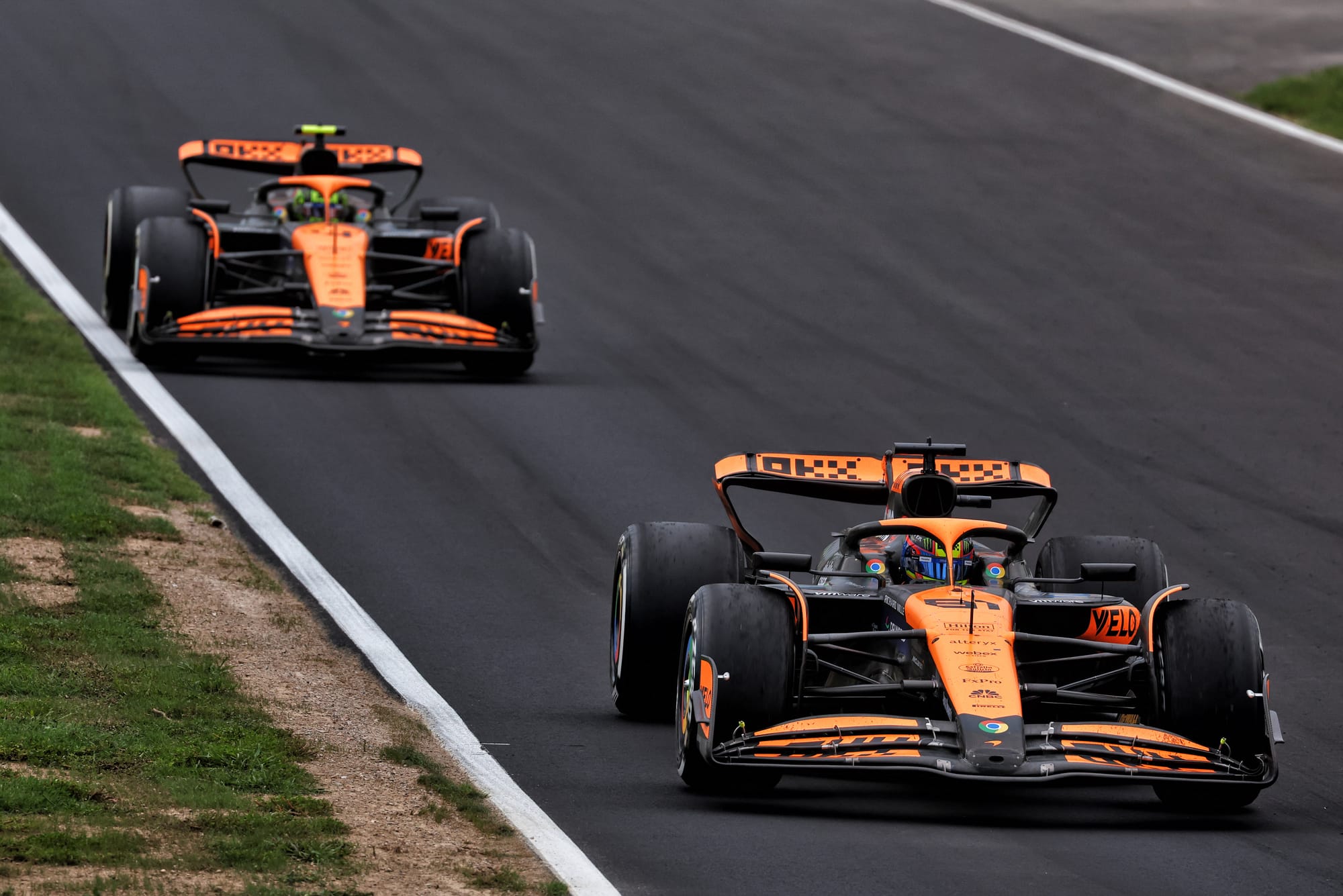
As the fronts on the McLarens grained, both Piastri and Norris were reporting their tyres were dead and they wouldn’t be able to get to the end on them.
Post-race analysis suggested they weren’t dead but merely needed a breather while the tread wore down and then they’d have come good again. Without ever making those second stops and surrendering track position. But possibly they’d just been pushed a little too hard, too early, when the assumption was that everyone was two-stopping.
“In hindsight, yes,” answered Piastri to the question of whether he should have stayed out. “But, you know, everyone's a legend [afterwards] and today, unfortunately, we got it a bit wrong. Myself being a big part of that.
“We had everything to lose from being in the lead of the race whereas Charles could try something a bit different. Even if it didn’t work he’d still be third. He picked the right gamble.
“The graining of the tyres has been a big topic all weekend. In practice, once you got graining, it was basically game over. Even in the first stint on the mediums, it was pretty difficult and when we made the second stop, my front left tyre was pretty heavily grained and I was going slower and slower. So it seemed like a sensible decision to pit again.”
The other factor pushing McLaren more surely towards those fateful second stops was that Norris had suffered a lock-up at Turn 4 on lap 31 on tyres which were 17 laps old. It seemed to suggest they were on their way out with another 22 laps still to go. But it was only graining…
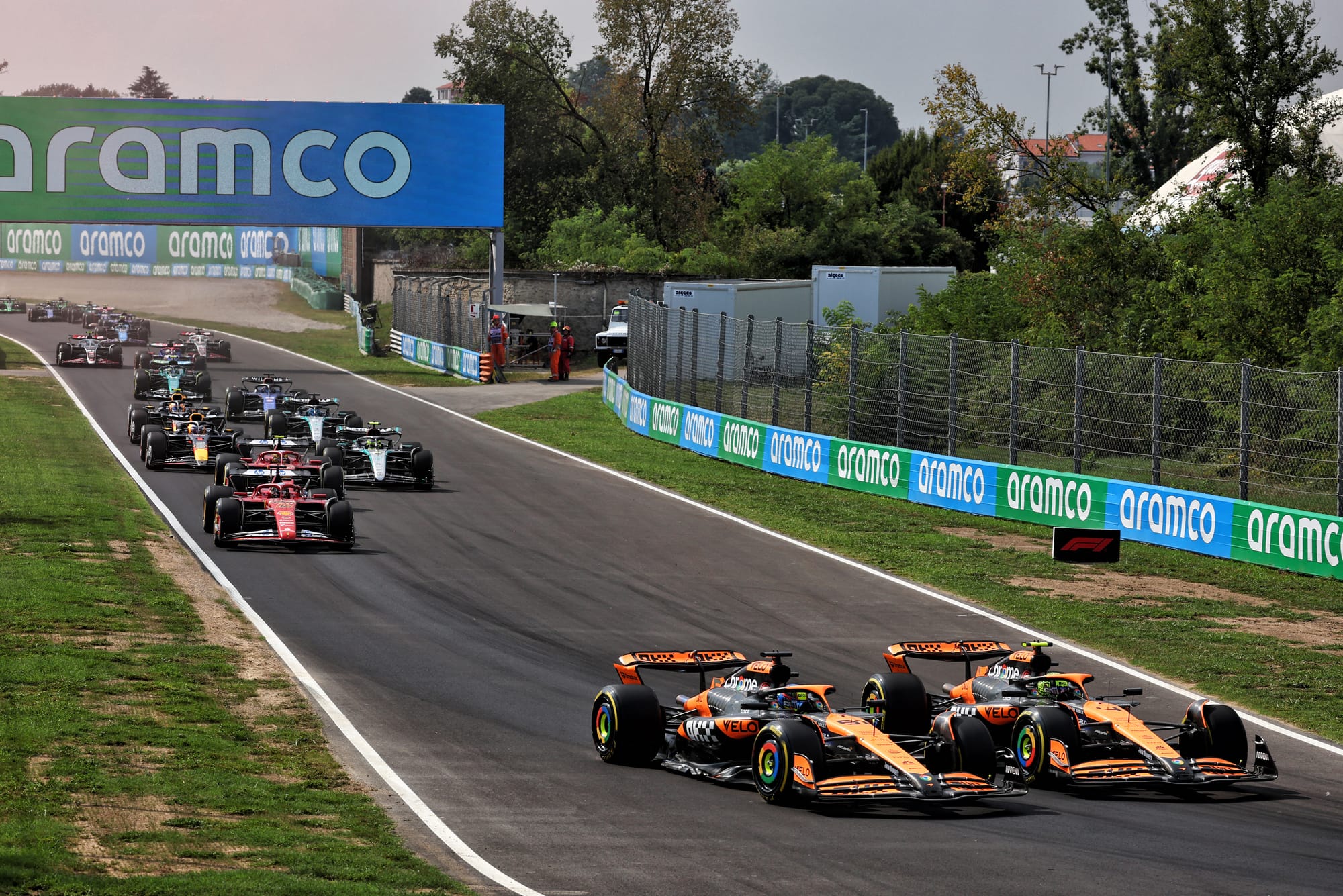
There was one way McLaren could have had much tighter control of the race, of course. If it had run that first stint 1-2 and used the second car to steadily back Leclerc away from the leader. They would have had great strategic flexibility that way and Ferrari would have been foiled whatever it tried.
That possibility disappeared at the Roggia chicane on the first lap as Piastri muscled his way past team-mate Norris, the resultant crossed-up Norris moment allowing the Ferrari to get between them. Piastri is like a sniper in such situations: clinical and no hesitation.
If it seems odd that McLaren had not imposed orders pre-race given the championship table, maybe it had.
“We will have to review, together with the drivers, the videos, understand their point of view and then we will assess together whether they were fully compliant or not,” was all team boss Stella would say on that.
So Piastri rejoined from his second stop in third place behind the two Ferraris. There were only 14 laps to go and he was 17s off Leclerc’s lead. He’d need to average more than 1.5s per lap faster and find a way past Sainz as soon as he encountered him. Piastri did that part of it simply enough on the 45th lap – with Sainz losing a further place to Norris on the next lap – but that still left Piastri over 9s adrift of Leclerc with seven laps to go.
His speed advantage dwindled as the laps ticked by the Ferrari was still 2.6s clear at the flag. Norris took a consolation fastest lap point on the final lap but was understandably disconsolate afterwards.
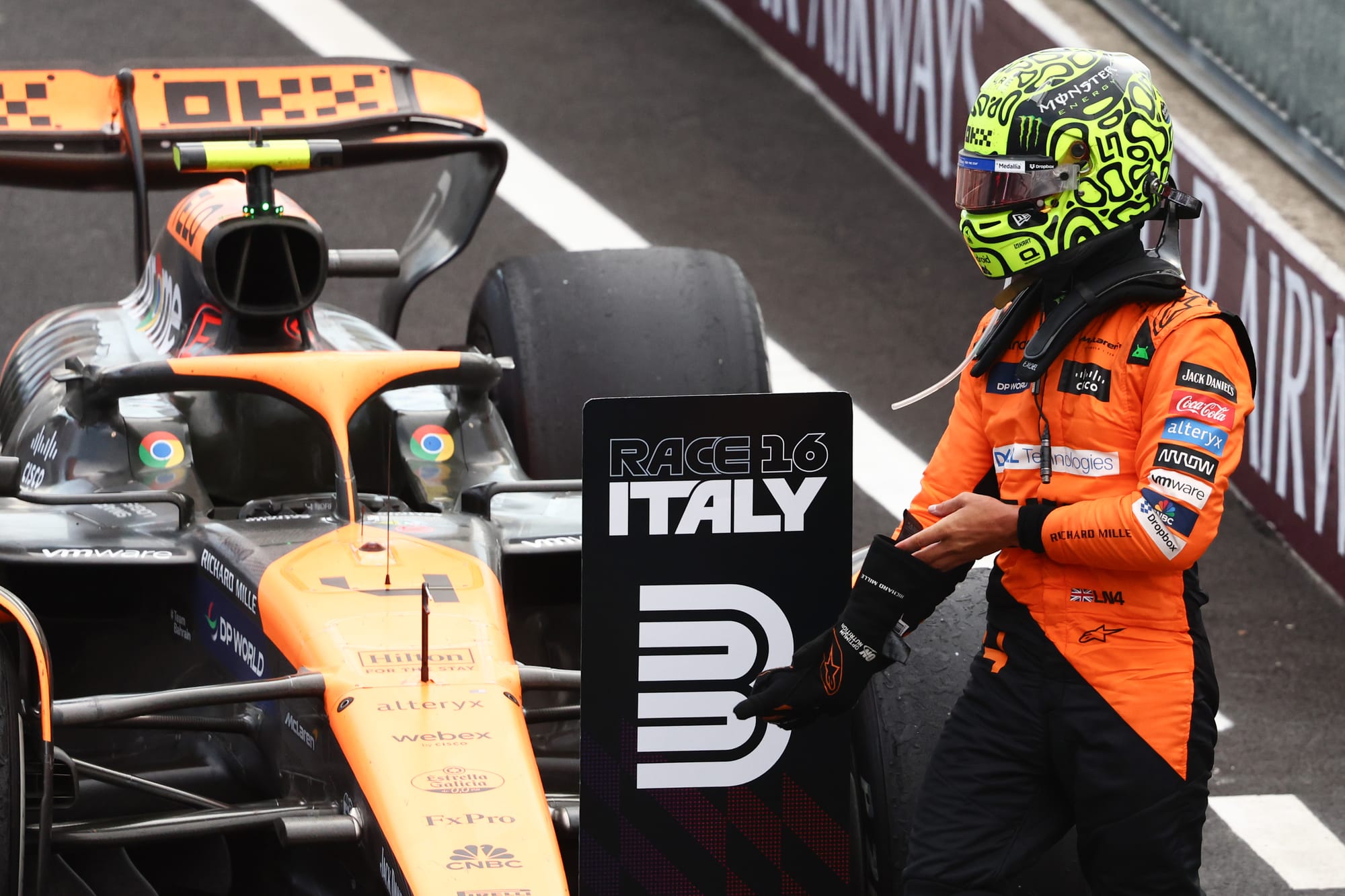
Sainz in fourth controlled Hamilton’s Mercedes throughout, and as the latter tried to apply some pressure in the second stint so he worked the tyres hard enough to lose him time to the Ferrari – hence a second stop and a second bite at the cherry. One which fell short just as surely as Piastri’s had on Leclerc.
George Russell’s race went wrong in the opening seconds as he tried for the outside of the McLarens into Turn 1, clipped his front wing endplate off against Piastri’s left-rear tyre and took a trip down the escape road. His two-stop recovery drive took him past Sergio Perez to seventh at the flag, a few seconds behind the also two-stopping Red Bull of Max Verstappen.
The Red Bull was never at the party, both Verstappen and Perez having started on the hards. They grained them up after 15 laps or so, as the car’s understeer balance on the smooth, hot new surface did not give them an easy time.
Leclerc was fairly relaxed about the rate at which Piastri was catching him, knew he wasn’t going to close that gap by the end.
So he got to experience winning Monza in a Ferrari all over again, five years on.
“Just like in 2019, the last few laps it was quite difficult to keep the eyes on the track and I was obviously looking a little bit in the grandstand, I could see everybody was standing up and that was really nice to see,” said Leclerc.
“In 2019 I remember there was my mum also in the grandstand because I didn't manage to have a paddock pass for her. This year, she actually had a paddock pass.”
Crucial to that 2019 victory was the ruthless way he dealt with team-mate Sebastian Vettel into the Roggia chicane on the first lap. Maybe teenage Piastri had watched that on TV and taken note…


